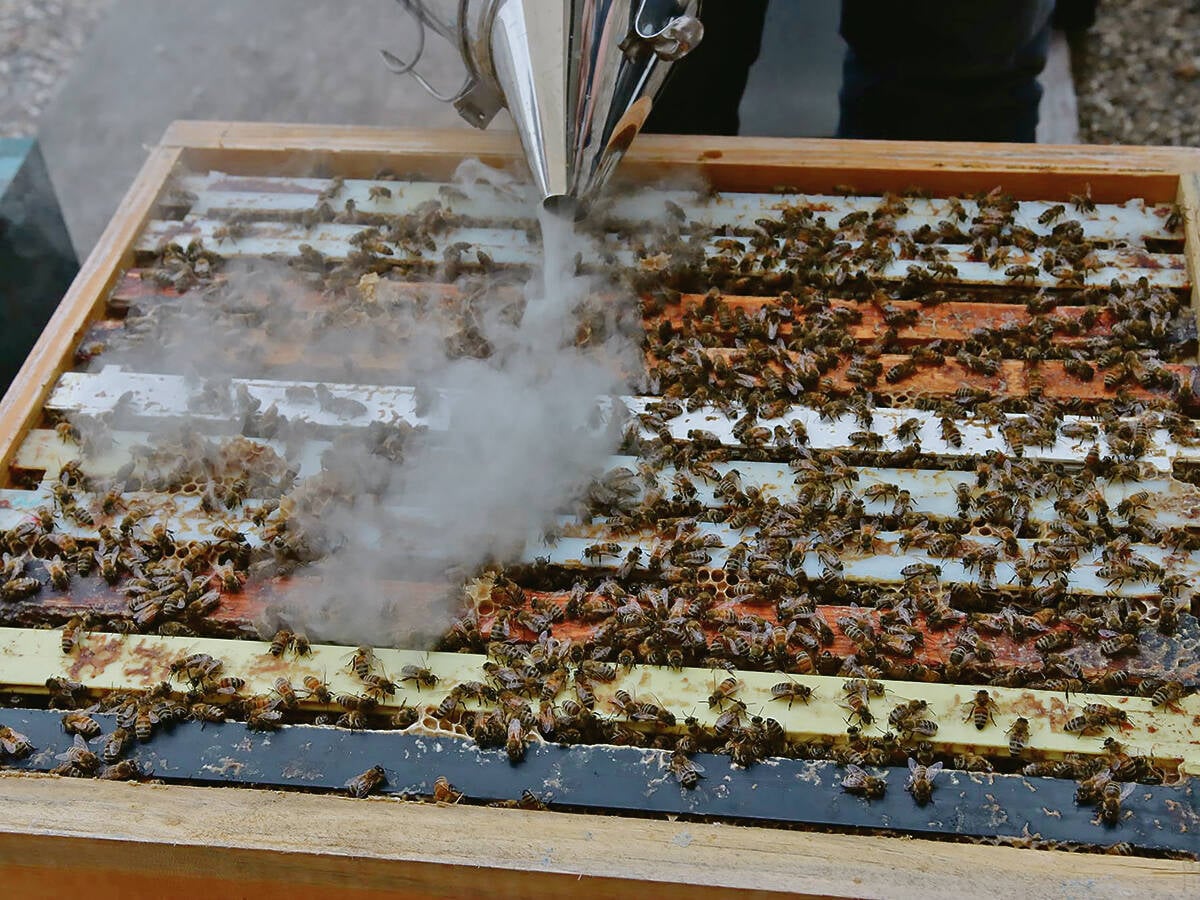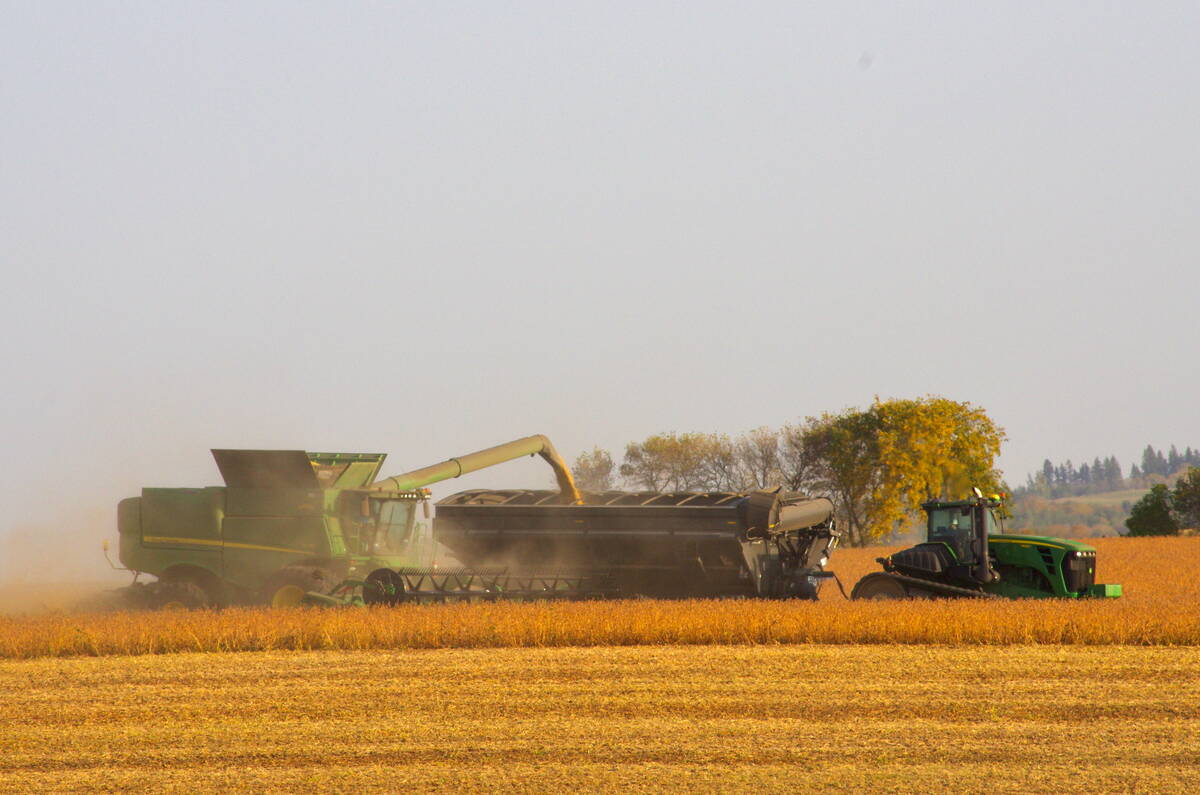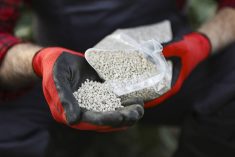Ask Peter Phillips about the state of gene editing in worldwide plant breeding today and he’ll likely tell you three things:
First, acceptance of the technology is siloed on a regional basis.
Second, Canada’s regulations around gene editing — although not perfect — do enable research in the space.
Third, looking specifically at Europe, social acceptance questions are driving the regulatory process, and laws there for gene edited crops skew close to those governing genetically-modified organisms (GMOs), unlike other markets — Canada included — that draw lines between the two. Despite this, Europe is still a market for gene-edited products.
Read Also

‘Comprehensive, fair’: Regulators double down on honeybee review
The Canadian Food Inspection Agency says its analysis of packaged imports from the U.S. was even-handed, despite industry complaints.
“They’ll still buy it and use it. They just won’t produce it, except for a small little bit of corn down in in Spain and Portugal,” said Phillips, a University of Saskatchewan social scientist with a focus on agriculture and breeding technologies.
Most of that consumption, he added, is in animal feed.
WHY IT MATTERS: Gene editing is increasingly of interest to cutting edge variety development. Canada has decided that gene editing is not the same as genetic modification and crops developed with it can have largely the same approval standards as regularly bred varieties, as long as there’s no foreign DNA involved.
Europe’s “two silo” system may thwart the international potential of gene editing technology, much as he believes it did with GMOs.
“The system hasn’t brought the agri-food industry down. It’s just truncated and narrowed the benefits from the technology that are there and it’s creating two streams; some regions are at the cutting edge of new technology adoption and use.”

“Others are using older technology that people aren’t really investing in. So there’s a gap in yields and differentiated quality attributes,” he added.
Phillips said scientists advocating for gene editing made a mistake, thinking the tech would be able to “leapfrog” the same European regulations imposed on GMOs. This thinking was based on the ability of the technology like CRISPR-Cas9 to fine-tune a plant’s existing genes to achieve desired traits. Gene modification, by contrast, commonly involves integrating brand new, foreign DNA from other organisms.
“There’s nothing transgenic to them,” said Phillips of plants derived with gene-editing.
“They’re simply editing … within the genome, and for the most part — in the two or three major developing countries: Canada, the U.S. and some of the Latin American countries — the view was that they’re not genetically modified so they don’t have to go through those special rules.”
Europe’s gene editing question
So why is the technology more acceptable in Canada and the U.S. than Europe?
It could come down to regulatory philosophy. In Canada and the U.S., gene-edited plants are reviewed as a final product with an eye towards minimizing harm. Europe, meanwhile focuses more on the technology by which they were bred.
Harmeet Chawla, a professor with the University of Manitoba’s department of plant science, dug a little deeper.
“A lot of factors have combined in Europe, whether that’s economical factors — some people are frustrated that certain companies own these technologies and they are making big money — (or) certain people have a problem from a more philosophical or religious point of view, that you’re now acting as a god and creating this stuff where this is not your place,” he said.

On the former point, Chawla said Europeans may have become distrustful of the big corporate money involved in plant breeding and, by extension, its scientific claims. In the process, regulations end up more skeptical of GMOs or genetically-edited products.
“That’s what happens when regulations are just a reflection of what general population opinion is about a technique or a product,” he said.
Phillips, however, suggested the opposite economical effect. He wonders if gene editing in plant breeding is on course to become a more grassroots space than GMOs, thanks to its relatively inexpensive startup costs.
Novel solutions
The resource-light nature of gene editing enables it to target the challenges of smaller crops generally neglected by the large seed companies, Phillips said. Those tend to lean on genetic modification to tailor crops and varieties to the needs of large-scale U.S. producers.
However, the boutique-type potential of gene editing comes with both pros and cons, said Phillips.
The large-scale, exclusive nature of GMO research can be more of a feature than a bug.
“The thing about GMOs is that, because it required so much scale, it tended to be in universities, public labs or large companies which are all governed six ways from Sunday,” he noted.
“They’re not going to knowingly make a mistake or do something stupid.”
That said, Phillips believes the gene editing space has an opportunity to prove itself more transparent and responsible than GMO work did in its formative years.
“What antagonized people early on were the the ‘frankenfood’ kind of prospects that people were talking about, (like) moving fish genes into plants like strawberries,” he said.
Research foothold growing
Gene editing is working its way into more and more Canadian crop development research.
The University of Manitoba, for example, is working with gene editing to develop independent canola shatter resistance.
That’s a trait already in wide use in Manitoba’s popular canola varieties. Novelty, though, isn’t the reason why Chawla and his team are chasing their own gene-editing derived version. First, they hope to develop a superior canola crop relying on gene editing. Secondly, they want to make a dent in the centralized corporate hold of the trait, increasing research potential and grower access.
“What we are trying to do here is develop an alternate shatter tolerance system which can then be used in the University of Manitoba rapeseed breeding program and could be openly available to other companies if they would like to licence it or they want to use our system,” the researcher said.
All the economic, yield saving, farmer-facing benefits for existing shatter resistance would also apply to their work, he added.

Although gene editing research can be hampered by funding limitations, Chawla said there’s still a sense of momentum within agricultural academia.
“We are seeing more partnerships between universities, government and industry, and it’s making agriculture more resilient and sustainable,” Chawla said. “And I think with that clear communication and balanced policy, I think we will have gene editing as a main component or pillar in plant breeding probably in the next decade or so.”
He doesn’t expect all to eventually be gene editing though. Chawla thinks it will ultimately be one tool in a breeding toolbox that also includes conventional breeding and GMO.
He used the development of higher yield as an example. Thousands of genes play a role in that.
“That’s where gene editing is not a favourable choice,” he said. “Gene editing is more of a choice when it’s a simple trait. Let’s say if there is a disease and it’s controlled by one gene, we can edit it and then get a resistant variety.”
Rhythms, and gene editing, drive new possibilities in wheat
That’s not to say that gene editing isn’t being used to bring in more bushels to the acre.
One day in 2017, Alberta researcher John Laurie basically asked himself, “What if I could optimize wheat’s exposure to the sun to increase yield?”
It was that year Laurie, a researcher with the Agriculture and Agri-Food Canada (AAFC) in Lethbridge, received funding to study the circadian clock of wheat.

In its simplest definition, a circadian clock creates rhythms which regulate sleep and wakefulness schedules in humans and other animals. In plants, these rhythms govern light perception and regulate metabolism and growth using a small number of core genes. By editing some of these core genes, Laurie has achieved a wide range of results.
“We have interesting lines: some that flower later, some that flower earlier, some a little shorter, some a little taller,” he noted.
Perhaps the biggest discovery, however, includes two lines that improve drought tolerance. The problem, said Laurie, is he’s still not sure exactly what causes it, although he and his team hypothesize it might be linked to a mutation on one specific gene.
His ultimate goal is to explore wheat’s entire clock.
Canada’s road for gene editing
Phillips thinks Canada’s product-first regulatory approach will encourage innovation.
“The good thing is that our Canadian system, as much as we love to malign it for its small failures, is pretty resilient,” he said.
“It’s principles-based. So even if we’ve never seen something before, we’ve got a set of principles that will drive us towards some thoughtful, repeatable, transparent process of how we made a choice about … entering a technology into the market.”
















